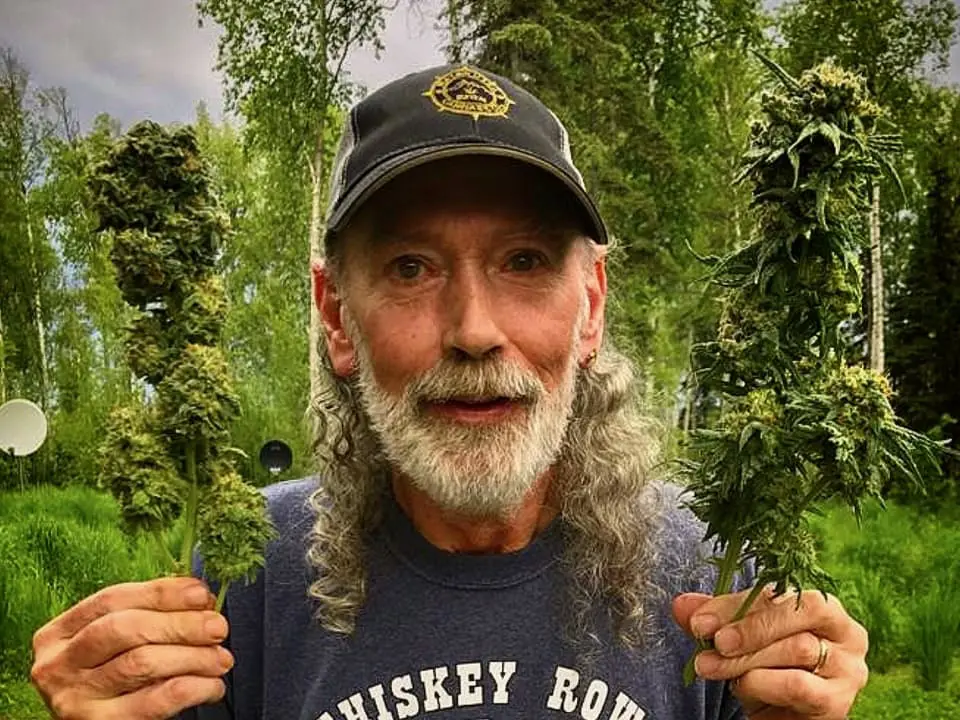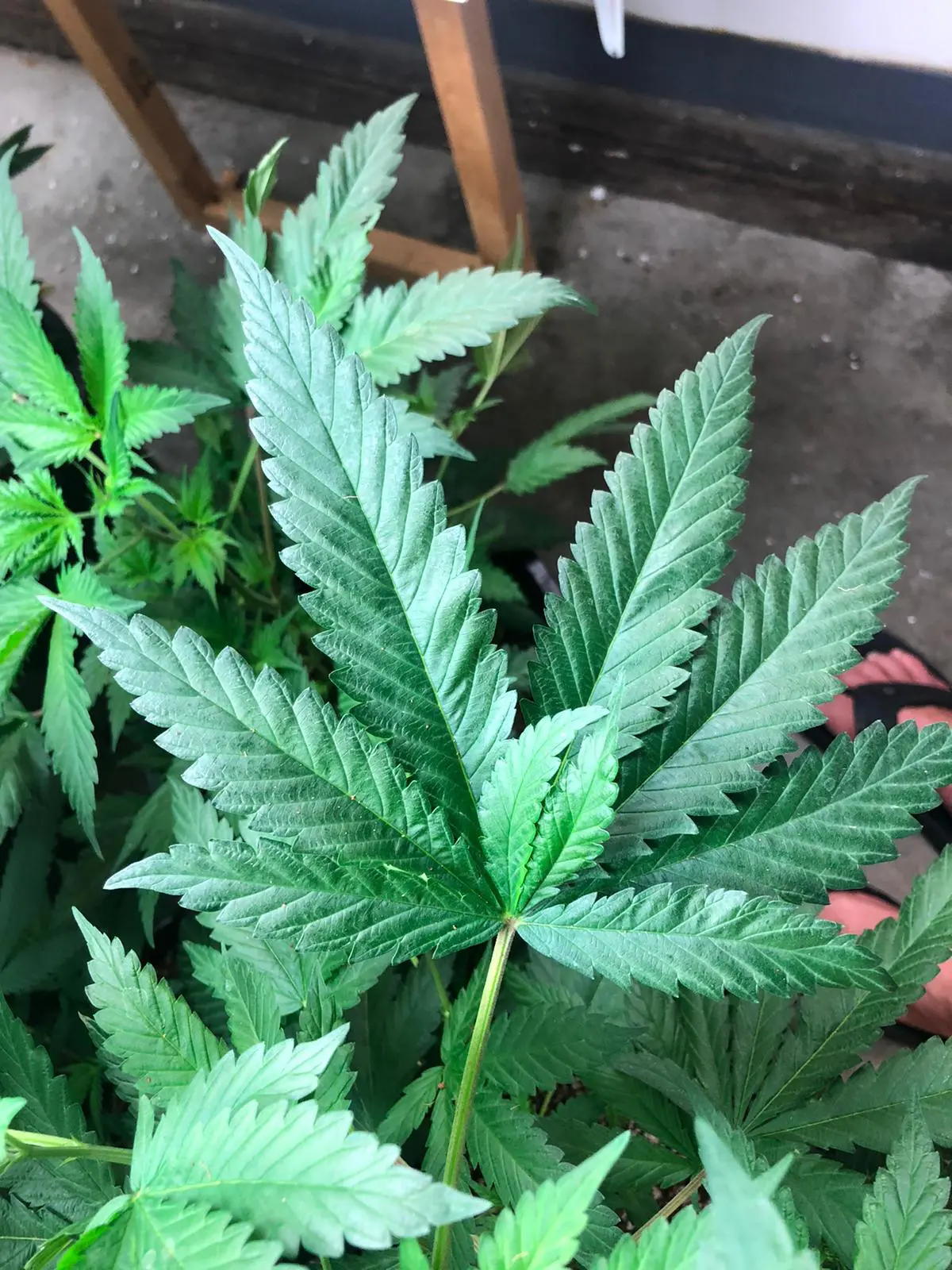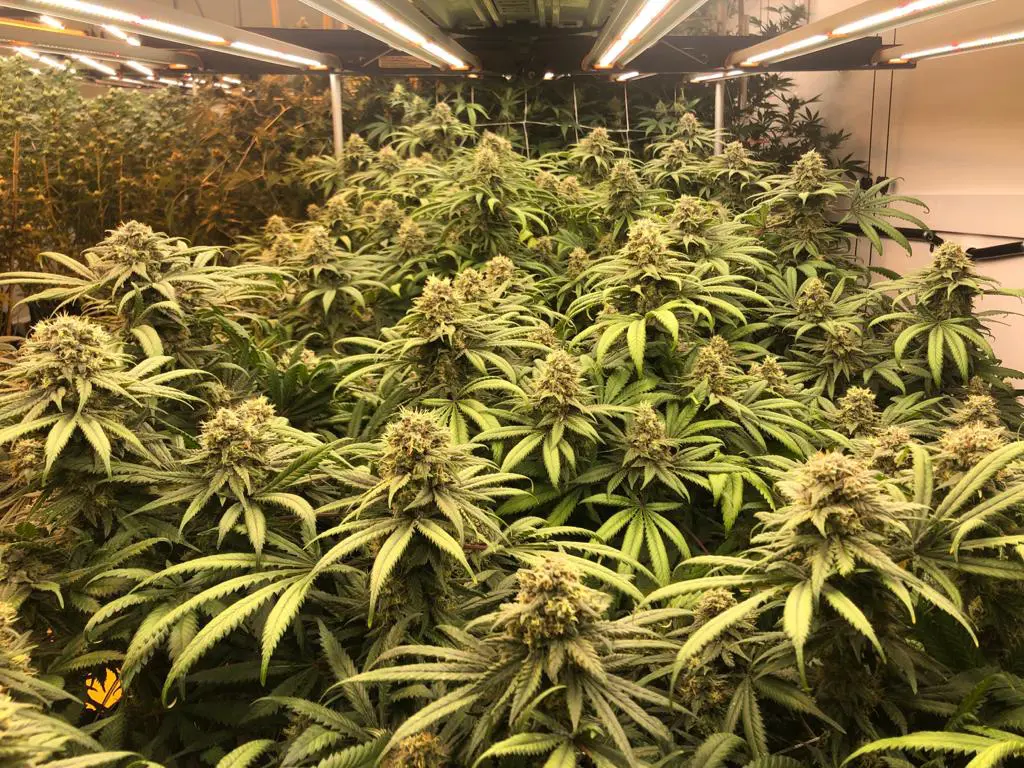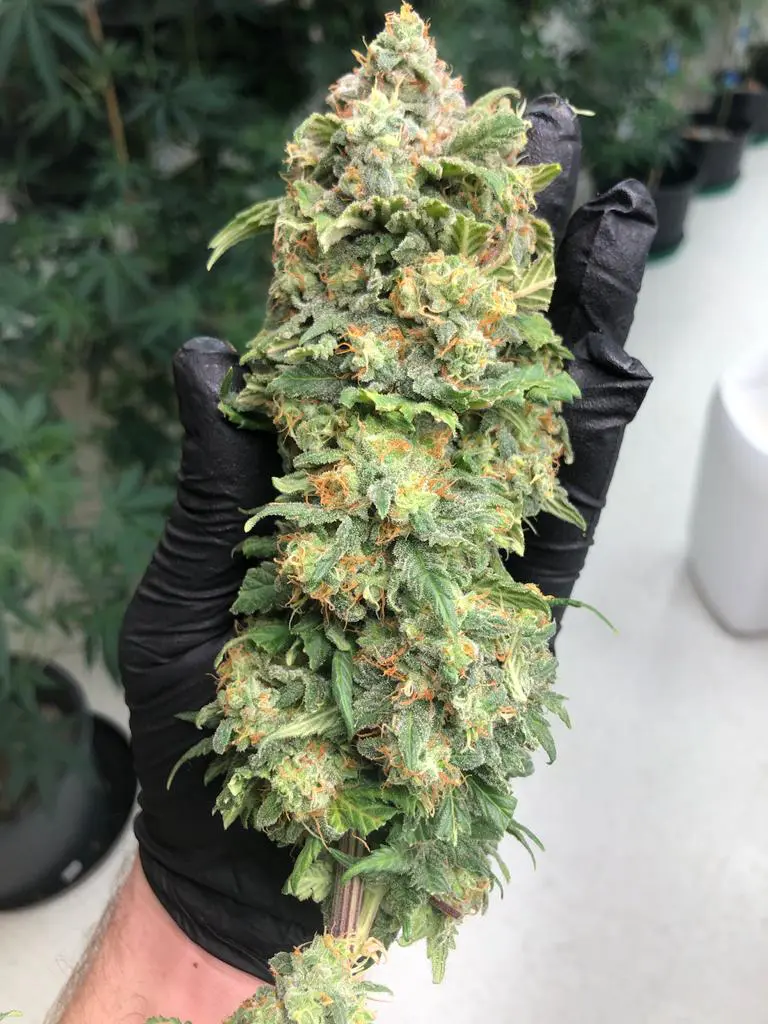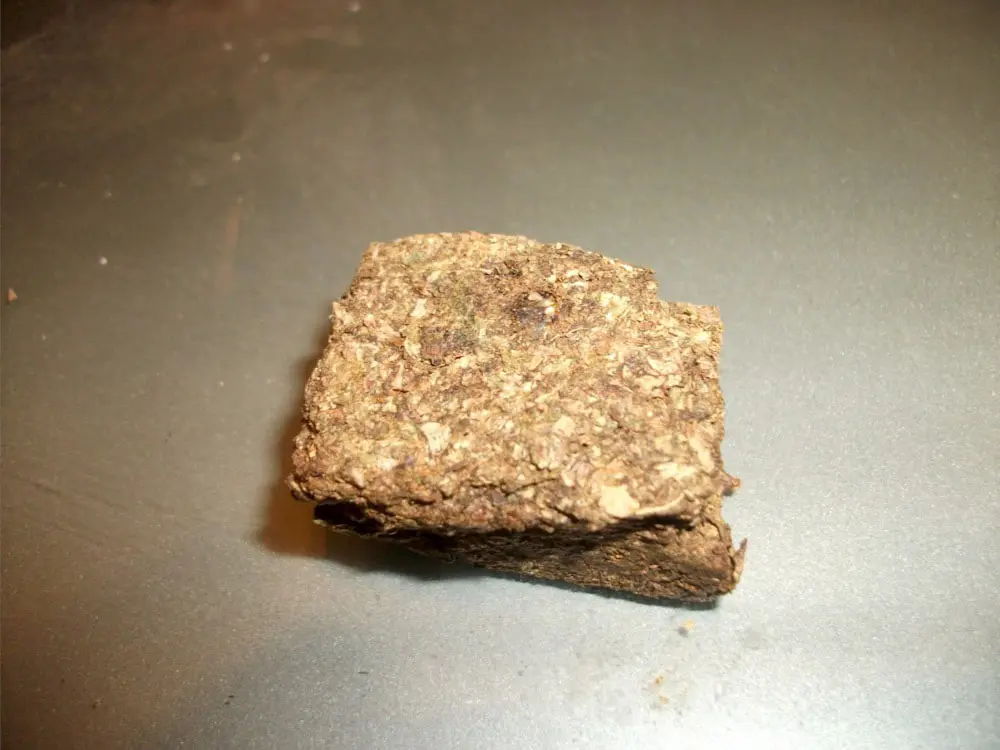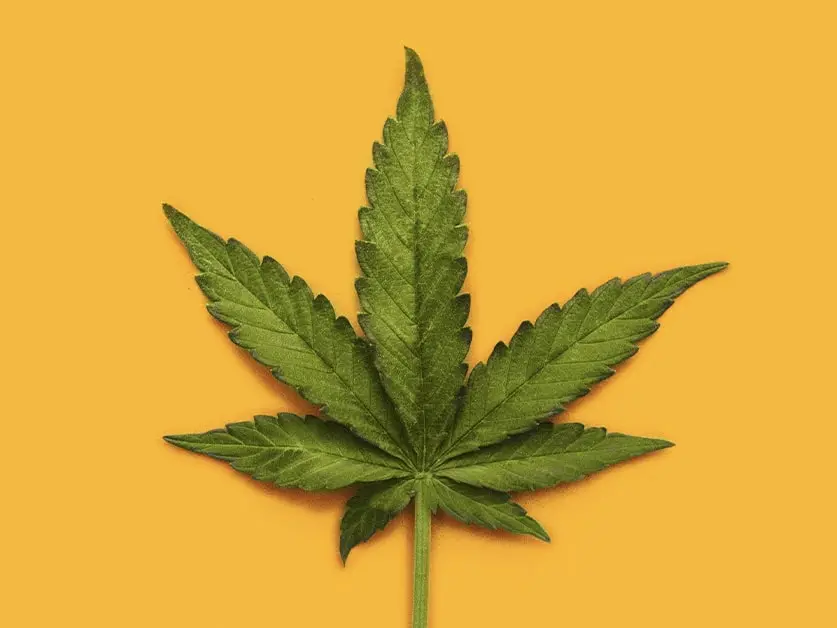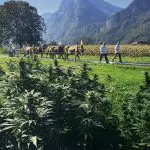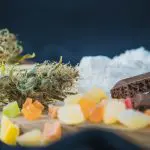“Call Jim. He has questions for you.”
I quickly grabbed my phone and dialed the number in the email.
A quiet, gravelly voice answered. It sounded just like the one from the documentary.
It was Jim Ross.
Jim is 59 years old and lives in Wasilla, Alaska.
“How are you doing Jim?” I ask.
“Oh you know, I’m hanging in there,” he replies.
In 2001, Jim was diagnosed with myositis, a rare, incurable condition that causes chronic inflammation and degradation of the muscles.
“I was meant to be gone 2 years ago, but I’m still kicking and walking,” Jim laughs as he tells me about how the disease has attacked every joint and muscle in his body.
“I’m just nothing but skin and bone. In the last two and a half years I’ve dropped 60 pounds. I’m on my last leg. But I make a medicine out of this MTF and my doctor says ‘keep doing what you’re doing. Do not stop!’”
He laughs again and starts explaining how he makes his medicine.
“I take 2 ounces of ground-up bud and one 5th of 100-proof vodka, put it in a canning jar, shake it, and after 3 months I strain it with cheesecloth and take little doses a couple of times a day,” says Jim.
The MTF he uses to make his medicine is Matanuska Thunder Fuck, a mysterious cannabis strain bred in the 1980s in Trapper Creek, on the foothills of the Alaska Range.
Jim first smoked MTF when he moved from Oregon to Alaska in 1987.
“I came up here on vacation, went fishing, and never left. It’s so beautiful, and I swear to god it’s the best fishing in the world,” he says.
Back then, MTF was originally known as the Trapper Creek Hash Plant to Jim and his buddies. It was bred by a guy known only as Tiny.
In 1988, Tiny suspected he was going to be raided by the cops. He abandoned his grow and asked his friend Jeff Payton to rescue his plants once the coast was clear.
In 1997, Jeff passed the strain to Jim, who has been keeping it alive ever since.
A Strain Like No Other
“What’s MTF like in the grow room?” I ask Jim.
“It’s just an unbelievable strain,” he replies.
Even over a crackly phone line 13,000km away, I can hear the excitement build in his voice.
“It’s just completely different. It has fangs that grow out of the fan leaves. And the fan leaves are bigger than your hand. I counted 13 fingers on a fan leaf once and a triple-fanged leaf growing out of that,” Jim says.
“Oh, and one time,” he goes on, barely giving me time to type out my notes, “I even got a stem growing out of one of my fan leaves!”
Since 1997, Jim has been growing his prized strain at home, always using clones taken either from a mother or healthy vegging plants. “I’ve never grown from seed. This is essentially the same plant since 1987,” he says.
Ever since he first got MTF from Jeff Payton, Jim has been passing clones around to his closest friends.
“I even ended up giving the strain back to Tiny and Jeff, who had stopped growing it for a while,” he says.
Jim even gave the strain back to Cameron van Ryn, a licensed grower frm Wasilla, who originally got the strain from Tiny but lost it to some spider mites.
Unfortunately, Tiny passed away recently. But thanks to Jim and his friends, the legendary Trapper Creek Hash Plant lives on.
Storm Chasers – The Search For Real Matanuska Thunder
In 2017, Ron Bass, a licensed grower from Houston, published an article in the Anchorage Daily claiming he’d struck gold and found Alaska’s fabled strain.
“I took one look at those plants in the pictures in the paper and knew it wasn’t MTF,” says Jim. “I can be in a room with 100 different strains and tell you exactly which one is MTF.”
And he was right; Ron’s plant turned out to be an MTF cross.
Jim eventually gave his strain to Ron, who promised to grow and process it for medicinal purposes.
“I didn’t want any money, I didn’t want any of the fame or glory. I told Ron that if he could save somebody or make a cure with it, I’d be satisfied. Because that’s what it’s been for me,” says Jim.
Over a period of 18 months, Jim gave Ron a total of 40 rooted clones of his prized plant. Ron has since trademarked MTF and commercialized the strain, even making it the theme of a rap song with Afroman.
Cameron Van Ryn is also growing it commercially and supplies Jim’s MTF to dispensaries in Alaska.
“They get a pound from him and it’s gone in a week. He can’t keep up with the demand,” Jim chuckles.
But Jim prefers to lay low. He’s in the middle of selling his house and moving to one of the 4 corner states with his wife.
“As you get older, the winters get harder,” he says. For the first time in our hour-long call, I hear Jim sigh.
“I can’t go snowmobiling or four-wheeling or skiing anymore. But, you know, it is what it is.”
I ask him about his wife, Teena, and Jim’s voice immediately picks back up.
“Oh, we’ve been married for 25 years. I met her in Alaska, and she’s from Oregon too,” he laughs again. “We were just friends for the longest time. Then, when we both became single, things started happening.”
“Some would call that fate,” I tell Jim.
“Yeah!” he replies. “And it’s been great ever since.”

